Hanoi (VNS/VNA) - Despite escalating global uncertainties and the looming threat of reciprocal tariffs from the US, Vietnam remains committed to its ambitious GDP growth target of 8% for 2025.
This determination, highlighted in a resolution issued by the Government on April 10, reflects not only optimism but also a strategic readiness to absorb external shocks through coordinated and flexible policies.
Amid growing geopolitical tensions, trade disputes and supply chain disruptions, Vietnam is also contending with extreme weather events, inflation and exchange rate volatility. Nonetheless, the Government is calling on ministries, local authorities and businesses to stay optimistic, confront challenges head-on and seize emerging opportunities.
In particular, 37 provinces and cities that fell short of their Q1 growth targets have been directed to reassess their performance and revise strategies for the remainder of the year.
One of the gravest current concerns is the potential imposition of reciprocal tariffs by the US, with rates possibly reaching as high as 46%. Although Washington has granted a temporary 90-day reprieve, the urgency remains.
According to the National Statistics Office (NSO), Vietnam’s exports to the US were valued at 119.6 billion USD in 2024, making it the country’s largest export market and accounting for nearly 30% of total exports. The trade surplus with the US stood at 104.6 billion USD.
Given the significance of US trade as a key economic driver, any new tariffs could have serious consequences for Vietnam’s major export sectors and overall growth.
In response, the Ministry of Finance is preparing support packages for affected workers and businesses, including a proposed extension of VAT reductions from July 2025 through to the end of 2026. The State Bank of Vietnam is also planning to manage exchange rates flexibly and ensure access to credit for firms under pressure.
Phi Vinh Tuong, Deputy Director of the Institute of Vietnam and World Economy, said the politicisation of trade policy – particularly amid ongoing US–China tensions – had disrupted financial markets and weakened investor confidence.
“For an economy as open as Vietnam’s, the impact is immediate, especially for foreign-invested enterprises which have long been the backbone of our export sector,” Tuong told Việt Nam News.
Unpredictable tax policies could lead foreign investors—many of whom shifted operations from China to Vietnam during Trump’s first term—to reconsider their strategies or even withdraw, he said. Domestic firms, although less globally integrated, would also face risks as international partners adjust supply chains to reduce exposure.
“The Fourth Industrial Revolution is further reshaping global supply chains. As Vietnam currently occupies many midstream links, the risk of disintermediation is high,” Tường said, adding that the country must enhance domestic supply chains and develop independent export capacity to remain competitive.
Calm and proactive
Following Prime Minister Pham Minh Chinh’s call for calm and proactive measures, the Government has adjusted trade policies, bolstered relations with the US, and lowered tariffs on key imports such as LNG and cars, while increasing agricultural imports to reduce trade tensions.
This proactive stance is most visible in Ho Chi Minh City, Vietnam’s economic engine. Despite concerns about tariffs, the city is pushing ahead with its 8.5% regional GDP growth target.
Nguyen Van Duoc, Chairman of the HCM City People’s Committee, said the city had formulated multiple response scenarios and was working closely with both local and international experts to revise policies and production plans.
Key industries were working to accelerate shipments within the 90-day grace period, while also adapting operations for longer-term resilience. At the same time, the city was promoting sustainable competitiveness by boosting domestic consumption, upgrading logistics systems and supporting higher value-added exports.
Experts believed this is a crucial moment to restructure the export economy.
Pham Binh An, Deputy Director of the HCM City Institute for Development Studies, said Vietnam must tighten enforcement of rules of origin and crack down on firms abusing export loopholes. He emphasised the need to shift goods label from “Made in Vietnam” to “Made by Vietnam”, with HCM City leading the push to build a self-reliant manufacturing sector through coordinated public-private strategies.
Nguyen Bich Lam, former Director of the National Statistics Office, said that to stay on track, Vietnam must make full use of free trade agreements to boost exports, diversify export products, reduce the service trade deficit, accelerate public investment, stimulate domestic demand through tax and welfare measures, and ensure macroeconomic stability.
Still, challenges lie ahead
A recent report by BMI Research, a subsidiary of Fitch Solutions, downgraded Vietnam’s 2025 GDP growth forecast from 7.4% to 6.4%, citing slower-than-expected export and FDI growth in Q1. GDP was 6.9% in the first quarter, down from 7.6% in Q4 2024. FDI increased by just 7.2%, while export growth slowed to 9.7%.
Investor sentiment remains cautious, with many adopting a wait-and-see approach due to tariff uncertainties.
However, a bright spot remains: domestic consumption, which rose by 7.5% thanks to relatively low inflation. Economists said this internal demand could serve as a stabilising force against external volatility if further supported.
In the long run, Vietnam’s growth will depend on its ability to nurture strong, tech-savvy domestic enterprises capable of weathering global trade fragmentation.
Tuong said that as global markets split into separate regulatory spheres—especially between the US and China—Vietnamese firms might face rising compliance costs. In this context, government support for access to finance, technology, and global integration would be essential.
While full decoupling from global trade is unlikely in the short term, Vietnam must prepare for possible long-term scenarios. Deepening bilateral ties, expanding the domestic market and enhancing productivity is the best path forward to achieve the 8% growth target—not just in principle, but in practice./.

See more

Vietnam studies nuances for successful Halal tourism
Muslim tourism has become a global trend and is playing an increasingly vital role in many countries' tourism sectors, said Dr. Trinh Thi Thu Ha, Rector of the Hanoi College of Commerce and Tourism.

Vietnamese businesses catch market trends in Canada
The Vietnamese companies showcased a wide range of goods, from raw input materials for production chains to high-value processed food products.

VinFast expands post-sales service in Netherlands through strategic partnership
Effective from early May, VinFast vehicle owners in the Netherlands can now access services at nine workshops, with plans to expand to LKQ Netherlands’ full network of 260 service centres.

Viglacera showcases green building materials at Coverings 2025 in US
The company presented its flagship products, including tiles, sanitary ware, ultra-clear glass, and energy-efficient glass all environmentally friendly and integrated with advanced technology.

VinFast returns to 2025 Montreal EV show with expanded line-up
At this year’s event, VinFast displays a full range of EVs, from compact models to three-row SUVs, including the VF 6, VF 7, VF 8 and VF 9.

Emirates, Sun Group partner to promote tourism in Vietnam
The MoU was signed during the Arabian Travel Market (ATM) in Dubai by Orhan Abbas, Emirates’ Senior Vice President of Commercial Operations for the Far East, and Nguyen Vu Quynh Anh, Deputy CEO of Sun Group cum CEO of Sun Entertainment & Hospitality Group.
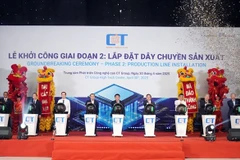
Construction of first locally-owned semiconductor factory begins
The groundbreaking ceremony, held in Binh Duong province, was attended by Deputy Prime Minister Nguyen Chi Dung, Deputy Minister of Science and Technology Pham Duc Long and leaders from universities, research institutions and international partners.
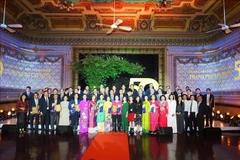
HCM City’s leading enterprises embrace innovation in new era
Currently, HCM City's businesses contribute over 50% of the city’s GRDP, 67% of total investment, and 25% of national import-export turnover. Many of these enterprises have built strong domestic reputations and are increasingly succeeding in international markets.
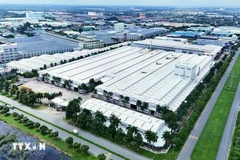
Production restructuring fuels demand in industrial real estate
With a solid foundation, increasing investor confidence, and strategic government support for sustainable and high-tech development, Vietnam’s industrial real estate market is well-positioned to become a regional leader in the era of sustainable prosperity.
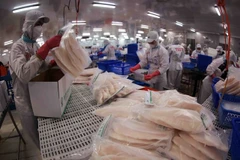
Tra fish exports on track reach close to 2 billion USD in 2025
Vietnam's tra fish exports continued its strong recovery in March, reaching 182 million USD, up 21% month-on-month and 16% year-on-year.

National flag carrier sees Q1 profit boost from int’l passenger surge, lower fuel prices
Vietnam Airlines Group – including Vietnam Airlines, Pacific Airlines and VASCO – carried nearly 6.2 million passengers in Q1, with Vietnam Airlines accounting for over six million, up 6.5% compared to the same period last year.
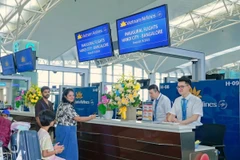
Vietnam Airlines expands reach with new routes to India’s tech hubs
Since entering the Indian market, Vietnam Airlines has operated over 3,200 flights and served over 511,700 passengers. In 2024 alone, Vietnam welcomed over 500,000 Indian visitors, ranking India among its top 10 tourism markets.

Vietnamese gov’t approves two-year trial of P2P lending
Under the pilot, only P2P lending companies licensed by the State Bank of Vietnam (SBV) will be allowed to operate. Foreign banks are excluded from participation. While credit institutions and fintech firms may join the trial, participation does not guarantee future compliance with business or investment regulations once formal laws are enacted.
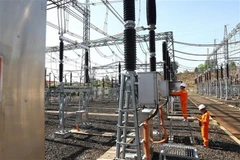
Vietnam eyes 18 billion USD a year for power plan through 2035
Vietnam targets being among the top four ASEAN countries for electricity reliability and in the top three for ease of electricity access.

Corporate profits soar in Q1 2025, led by banking sector
According to statistics from Yuanta, market-wide revenue and post-tax profit rose by approximately 20.1% and 50.8% year-on-year, respectively, buoyed by the low comparative base of 2024.

Overseas Vietnamese help Vietnamese products go global
In 2016, approximately 4.5 million Vietnamese were residing in 109 countries and territories. Today, the figures have risen to over 6 million and more than 130, respectively. Once focused on small-scale trade, many OV entrepreneurs now own major retail centres and operate extensive wholesale networks, boosting the availability of Vietnamese products abroad.
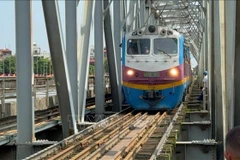
PM orders fast-track construction of Lao Cai - Hanoi - Hai Phong railway
The Minister of Construction was asked to work closely with local authorities to hasten land clearance, compensation, resettlement, site surveys, and the drafting of a feasibility study, which must be completed by June 2025, setting the stage for the project's groundbreaking on December 19, 2025.

Vietnam cuts LNG import tariff to boost clean energy transition
The Vietnamese Government has reduced the preferential import tariff on liquefied natural gas (LNG) from 5% to 2% under Decree No. 73/2025/ND-CP, issued on March 31. The move marks a key step in accelerating the country’s shift from fossil fuels to cleaner energy.

Vietnam’s labour market modernised toward deeper global integration
Through targeted measures, including more job-matching programmes, employment fairs, and job creation loans, the Government has effectively connected provinces rich in human resources with key economic hubs.
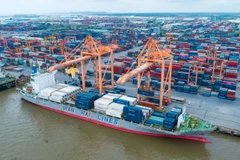
Vietnam to become second-largest economy in Southeast Asia by 2036: CEBR
Between 2021 and 2036, CEBR forecasts that the position of Vietnam in the World Economic League Table will improve considerably, with its ranking rising from 41st to 20th by 2036.







